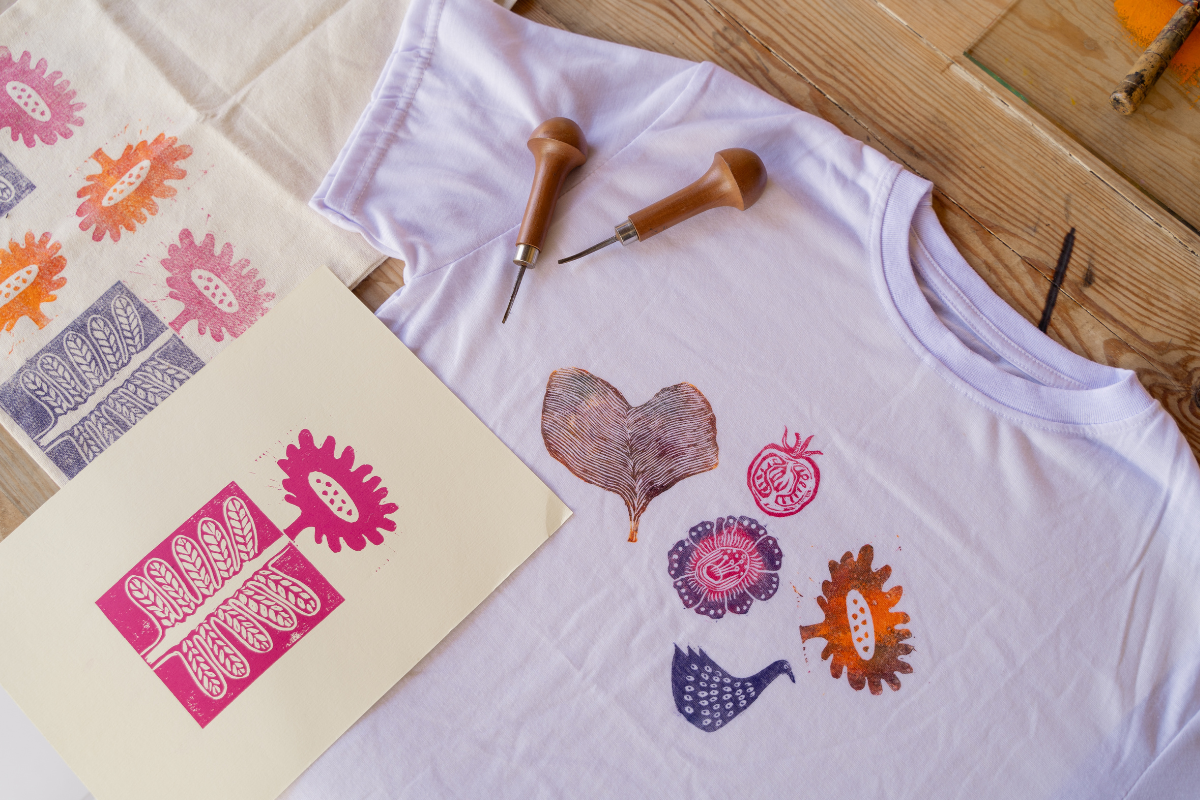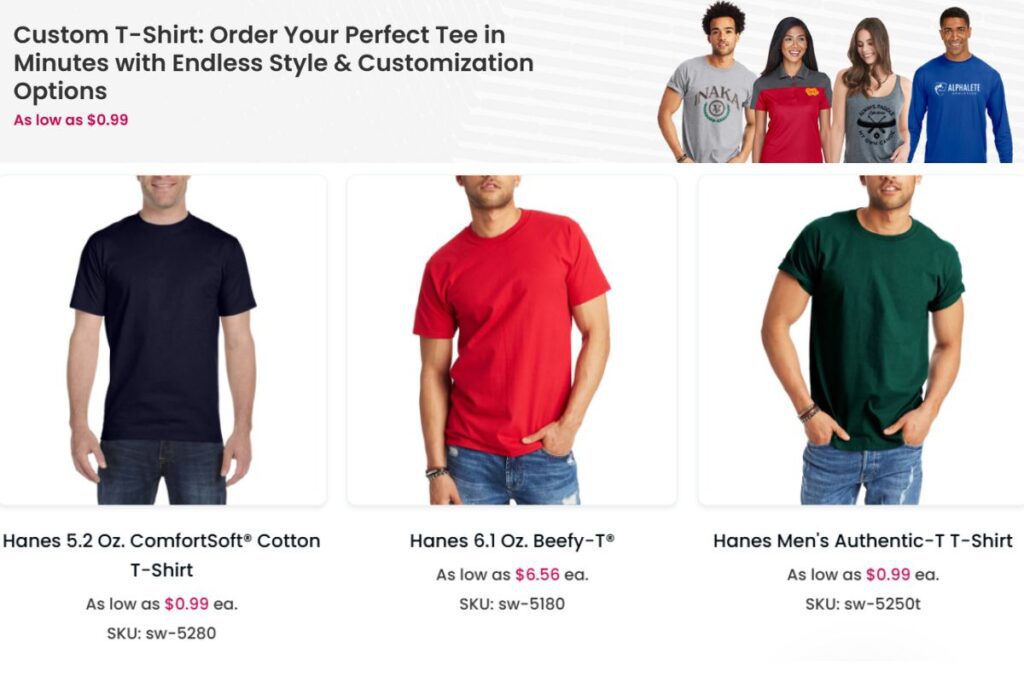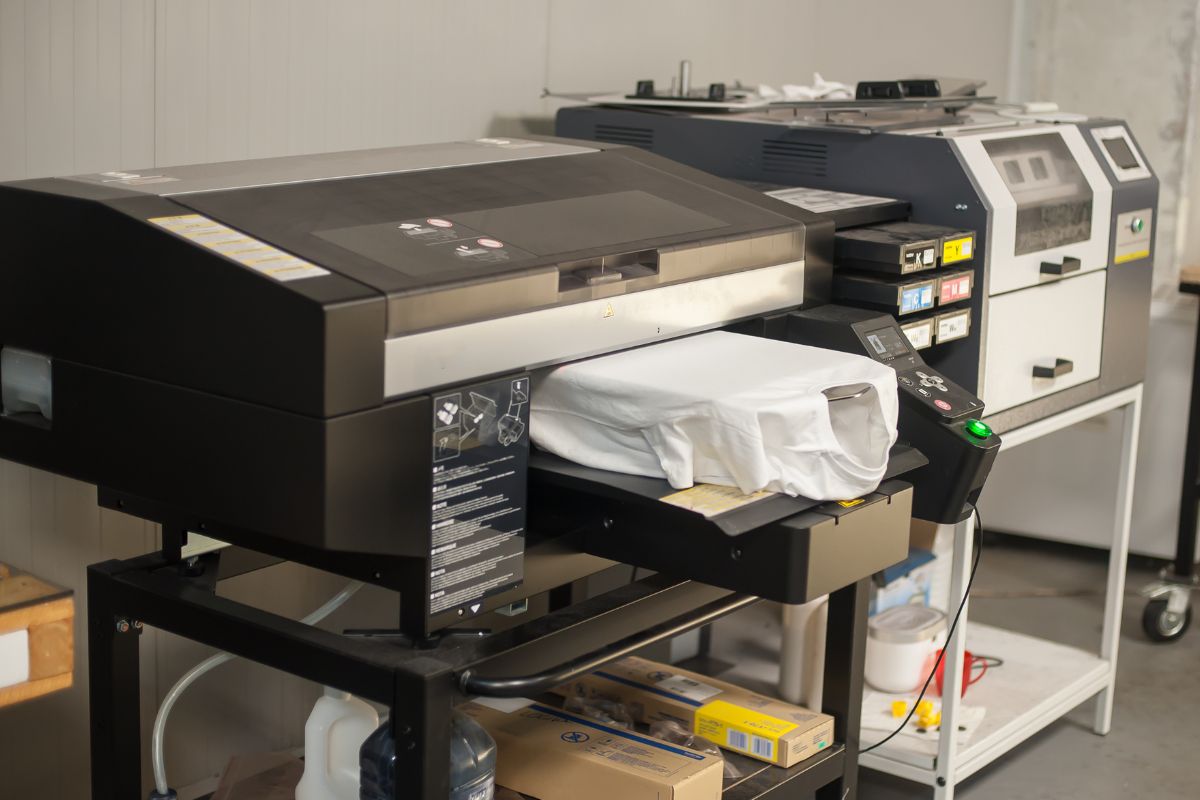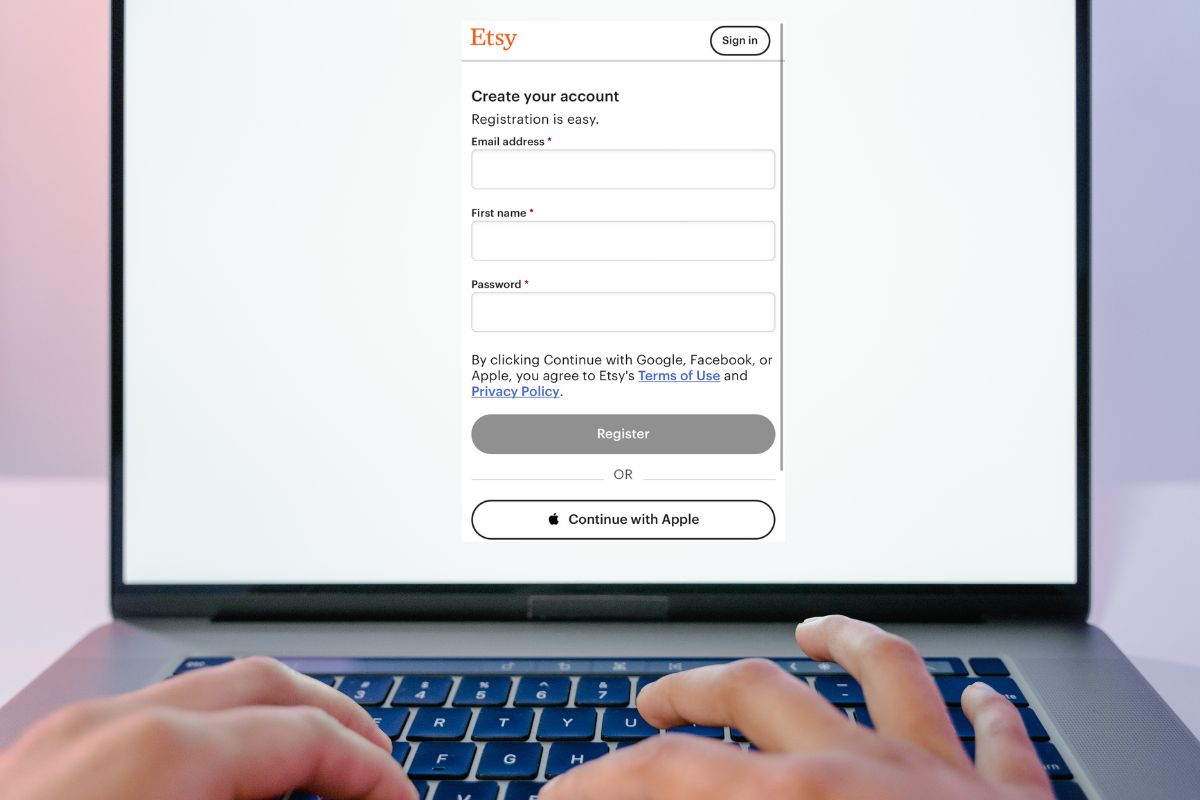Making custom t-shirts can be a fun and rewarding project. You can create unique designs that showcase your personality or promote a special event.
Whether you want to express your creativity or make gifts for friends and family, crafting your own t-shirts provides endless possibilities.
Table of contents
- Understanding the Basics of Custom T-Shirts
- Designing Your Custom T-Shirt
- Choosing the Right Printing Method
- Ordering Process for Custom T-Shirts
- Aftercare and Maintenance of Custom T-Shirts
- Leveraging Free Resources and Templates
- Marketing Your Custom T-Shirt Designs
- Frequently Asked Questions
- How can you print your own t-shirt designs at home?
- What materials are required to create custom t-shirts from scratch?
- Which online platform is best for designing custom t-shirts?
- What is the average cost of producing custom t-shirts?
- Are there profitable business opportunities in custom t-shirt making?
- Where can one find services for custom t-shirt printing locally?
With various methods available, such as using heat transfer, screen printing, or even online design tools, getting started is easier than ever.
You can choose to work from home with basic materials or use professional services that help bring your vision to life. The right technique depends on your design ideas and budget, making it important to explore your options.
Custom t-shirt design opens up a world of expression. From everyday wear to special occasions, your designs can reflect your style and message. Let’s dive into how you can create your own custom t-shirts step by step.
Understanding the Basics of Custom T-Shirts
When making custom t-shirts, selecting the right materials and ensuring proper sizing are essential for a successful design. This section covers key considerations for fabric choices and fit.
Materials and Fabric Options
Choosing the right fabric is crucial for custom t-shirts. Ringspun cotton is a popular option. It is softer and more durable than regular cotton, making it comfortable to wear. This fabric also has a smooth finish, which works well for printing designs.
Other materials include:
- Polyester: Strong and resistant to shrinking. It’s great for moisture-wicking t-shirts, ideal for sports.
- Cotton-Poly Blends: Combine the comfort of cotton with the durability of polyester. They often hold colors well.
Consider the purpose of your personalized t-shirt. For casual wear, cotton is excellent. For active pursuits, polyester or blends are better choices. Always check the fabric’s care instructions to ensure longevity.
Sizing and Fit Considerations
Getting the right size for your t-shirt is vital for a comfortable fit. Here are some tips:
- Know Your Measurements: Measure your chest, waist, and length to find the best size.
- Consult Size Charts: Most suppliers provide size charts. Always check before ordering.
- Consider Fit Types: T-shirts come in various fits, such as regular, slim, and loose. Choose based on your style preference.
Keep in mind that different brands may have varying sizes. It’s helpful to consider how the t-shirt will be worn. If you want a fitted look for a promotional event, a slim fit may work. For a relaxed style, a regular fit is better. This way, your custom t-shirt will look great and feel comfortable.
Designing Your Custom T-Shirt
| Step | Description | Tips for Best Results |
|---|---|---|
| 1. Choose a T-Shirt | Select a fabric type (cotton, polyester, or blend) based on your printing method. | Cotton works best for DTG, while polyester is ideal for sublimation. |
| 2. Select a Printing Method | Decide between screen printing, heat transfer, sublimation, DTG, or embroidery. | Choose a method based on budget, design complexity, and durability. |
| 3. Create or Upload Your Design | Use software like Photoshop, Illustrator, or Canva to design your artwork. | Ensure the design is high-resolution (300 DPI) and in PNG format for transparency. |
| 4. Prepare the T-Shirt for Printing | Lay the shirt flat and iron out wrinkles to ensure a smooth surface. | Pre-wash the shirt to prevent shrinkage after printing. |
| 5. Print or Apply the Design | Depending on the method, use a heat press, inkjet printer, or screen printing setup. | Align the design correctly to avoid misprints. |
| 6. Cure the Print | Apply heat or let the ink dry to set the design permanently. | Follow the curing instructions for each printing method. |
| 7. Quality Check | Inspect the print for smudges, misalignment, or ink bleeding. | Perform a test wash to check durability. |
| 8. Final Touches | Remove excess threads, tag the shirt with branding, and fold neatly. | Use eco-friendly packaging for a professional presentation. |
| 9. Care Instructions | Provide washing and drying instructions to customers. | Recommend cold wash and air drying for longer-lasting prints. |
| 10. Sell or Wear Your Custom Shirt! | Package the shirt for sale or personal use. | Consider online platforms like Etsy, Shopify, or print-on-demand services. |
Creating a custom t-shirt involves several important steps. You will need to choose the right tools, select appealing colors and graphics, and add personalized text or icons to make your design shine. Here’s how to get started.
Using Design Software and Tools
To design your custom t-shirt, using design software can simplify the process. Options like Canva and Adobe Express provide user-friendly interfaces and templates. You can start with a blank canvas or choose from pre-existing designs.
Most platforms let you upload your own images, making it easy to incorporate personal touches. Look for features that allow you to manipulate graphics, adjust sizes, and view your design in real-time. This helps ensure that your final product matches your vision.
Additionally, utilize online tools that offer various design elements, such as shapes, lines, and icons. This flexibility can elevate your design and set it apart from standard options.
Selecting Colors and Graphics
Color plays a critical role in your t-shirt design. Start by considering your target audience and the message you want to convey. Cool colors like blue and green give calm vibes, while warm colors like red and yellow can be energizing.
When selecting graphics, make sure they fit your theme. Choose images that are clear and high-quality to avoid pixelation when printed. Many design tools feature extensive libraries of graphics you can use. Don’t hesitate to mix and match different styles to find the perfect look for your custom t-shirt.
Be mindful of the color contrast between your shirt and the graphics. Ensure that your design pops and is easily visible from a distance.
Incorporating Personalized Text and Icons
Adding text can personalize your t-shirt and make it unique. Think about what you want the text to say—this could be a slogan, a name, or an event date. Keep it short and impactful for the best effect.
Choose fonts that align with the style of your shirt, whether playful, modern, or classic. Make sure the text size is appropriate and easy to read from afar.
Incorporate icons to enhance your design. Icons can be small images that represent ideas or themes. They can add a fun element and help visually communicate your message. Many design tools let you layer text and icons, creating a balanced and engaging layout.
Choosing the Right Printing Method
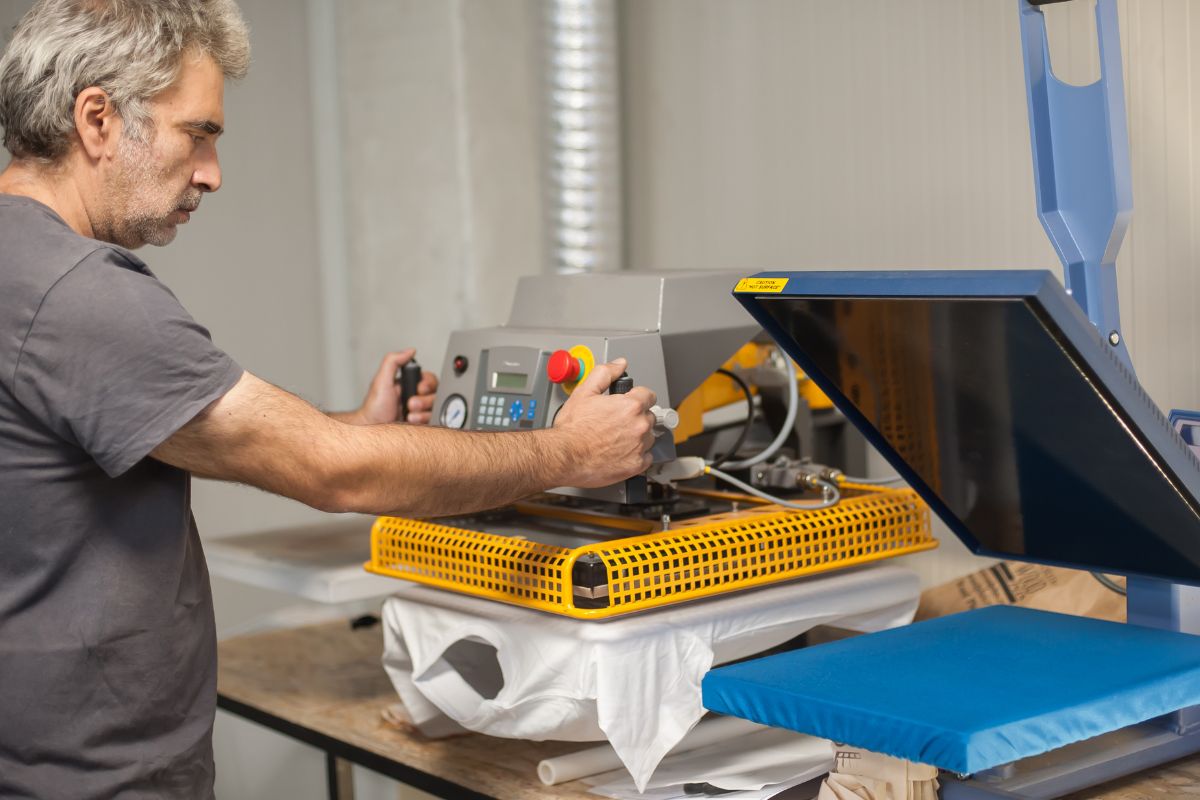
Selecting the best printing method is crucial for your custom t-shirt project. Each method has unique features that can affect quality, cost, and production time. Understanding these differences helps you decide which option suits your needs best.
Screen Printing vs. Digital Printing
Screen printing is a time-tested method where ink is pushed through a stencil on a screen. This allows for vibrant colors and excellent durability. It works well for larger orders, as the setup costs are spread over many shirts. The more shirts you print, the lower the cost per shirt.
In contrast, digital printing, also known as direct-to-garment (DTG) printing, allows for more intricate designs with multiple colors. This method prints directly onto the fabric, offering great detail and flexibility for small orders. DTG works best for custom prints where you need no minimum order and a quick turnaround.
Bulk Orders vs. Print-On-Demand
When choosing a printing method, consider your order size. For bulk orders, screen printing is often more cost-effective. With larger quantities, you benefit from lower costs per t-shirt. The vibrant colors and quality remain consistent across the batch, making it ideal for events or promotional items.
On the other hand, print-on-demand services allow you to print only what you need when you need it. This is perfect for smaller businesses or personalized gifts. You can test designs without upfront costs and adjust based on customer feedback. With print-on-demand, you maintain flexibility and avoid excess inventory.
Ordering Process for Custom T-Shirts
When ordering custom t-shirts, you need to consider the quantity you want and how you want them shipped. It’s also crucial to preview your design to ensure everything looks just right before you finalize your order.
Choosing the Quantity and Shipping Options
Start by deciding how many t-shirts you need. Many companies have no minimum order requirement, which means you can order just one or many.
Consider options like:
- Small Orders: If you only need a few shirts, check for companies that offer one-off orders.
- Bulk Orders: Ordering in larger quantities often reduces the unit price.
Next, think about your shipping choices. Most services provide free standard shipping on certain orders or for first-time customers. Check delivery times to ensure your shirts arrive when you need them.
Previewing Your Design Before Ordering
Before you place your order, you should preview your design. This step is essential to avoid mistakes.
Use the online tools provided by the printing service. You’ll typically upload your artwork and see how it looks on the shirt.
Things to check:
- Alignment: Ensure the design is centered correctly.
- Sizing: Make sure your text and images are sized appropriately for the shirt.
- Color: Double-check that colors appear as you expect.
If any changes are needed, most platforms allow you to revise your design easily. This careful review helps prevent issues and supports a smooth ordering experience, including easy returns if necessary.
Aftercare and Maintenance of Custom T-Shirts
| Care Aspect | Best Practices | Common Mistakes to Avoid |
|---|---|---|
| Washing | Wash inside out in cold water using mild detergent. | Using hot water, which can fade colors and weaken the print. |
| Drying | Air dry or tumble dry on low heat. | High heat drying can crack or peel the design. |
| Ironing | Turn the shirt inside out and use low heat. Place a cloth over the design if needed. | Directly ironing on the print, which can damage it. |
| Storage | Fold neatly or hang in a cool, dry place. | Leaving shirts crumpled, leading to permanent creases on the print. |
| Avoid Harsh Chemicals | Use gentle detergents without bleach or fabric softeners. | Harsh chemicals can weaken fabric and fade prints. |
| Stain Removal | Dab stains gently with mild soap and cold water. | Scrubbing aggressively, which can damage the fabric and design. |
| Washing Frequency | Wash only when necessary to preserve the print. | Frequent washing causes faster wear and tear. |
| Print Durability Test | Check after multiple washes for fading or peeling. | Ignoring print damage, leading to a short lifespan. |
Taking care of your custom t-shirts is essential to keep them looking fresh and vibrant. Proper aftercare helps maintain prints and extends the lifespan of the fabric. Below are important tips on washing your t-shirts and how to manage returns or exchanges.
Washing and Care Tips
To keep your custom t-shirts in good shape, follow these washing guidelines:
- Wash less frequently: Only wash your shirts when needed. This reduces wear and conserves resources.
- Turn inside out: This protects the print from friction during washing.
- Use a gentle cycle: Select a cool or warm water setting, typically 30-40°C, to avoid damage.
- Choose the right detergent: Opt for a mild liquid detergent. Avoid non-chlorine bleach if needed for stain removal.
- Skip the dryer: Air-drying is preferred to reduce heat damage and shrinking.
Sticking to these tips will help your custom t-shirts maintain their colors and prints for a longer time.
Dealing With Returns and Exchanges
Managing returns and exchanges for personalized t-shirts requires attention to detail. When a customer requests a return, remember the following:
- Check return policies: Always have clear guidelines on the conditions under which returns are accepted.
- Inspect the shirt: Ensure the shirt is in its original condition, with tags still attached.
- Offer flexible shipping options: Provide different methods for returning items to accommodate customer needs.
- Communicate clearly: Keep your customers informed about the return process, including timelines and shipping instructions.
By handling returns with care and clarity, you can foster customer satisfaction and loyalty.
Leveraging Free Resources and Templates
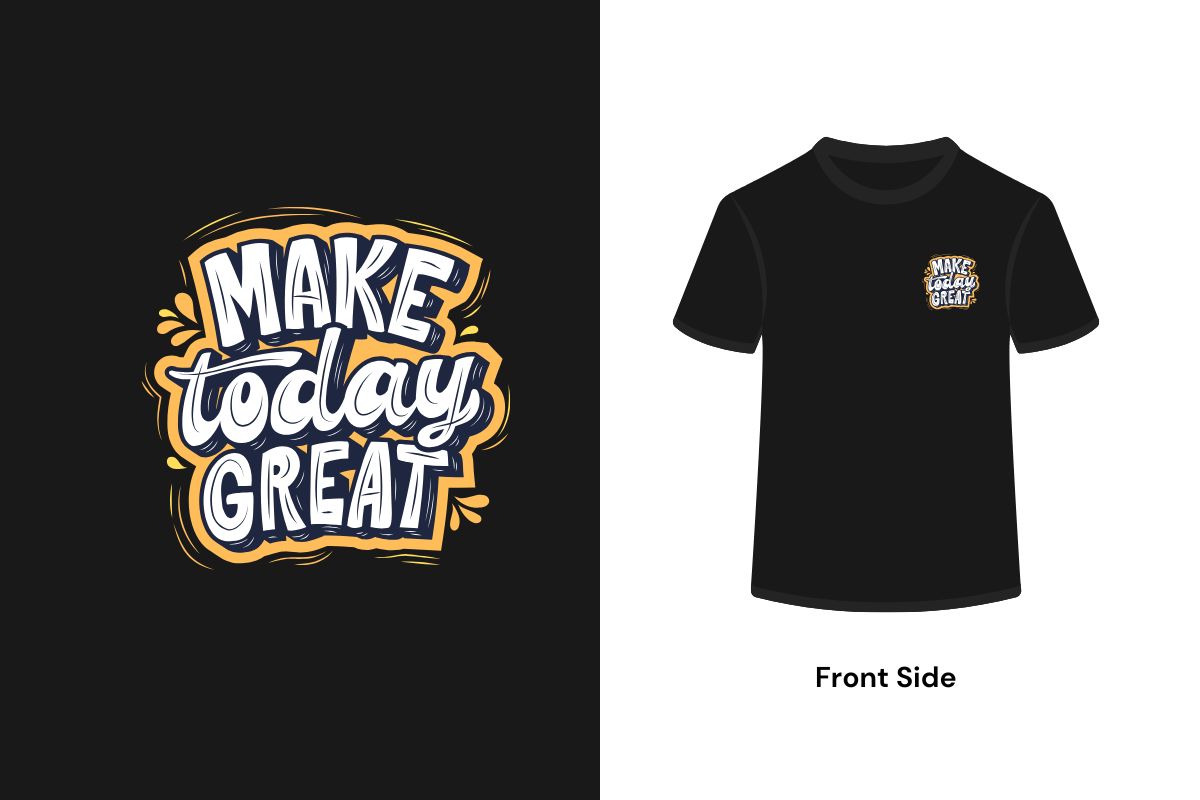
Using free resources and templates can significantly simplify the process of designing your custom t-shirts. By taking advantage of various tools, you can create personalized designs without any cost.
Exploring Free Design Templates
Free design templates are a great starting point for your t-shirt project. Many websites offer a range of templates that fit various styles and themes. Adobe Express and Canva are two popular options that provide user-friendly interfaces.
- Variety of Choices: You can find templates for different occasions, from casual wear to special events.
- Customization: Most templates allow you to change colors, text, and graphics to match your vision.
To use these templates, simply choose one that fits your needs. Then, personalize it by adding your own images or text. This method saves time and helps ensure a professional appearance.
Utilizing Online T-Shirt Makers
Online t-shirt makers are excellent tools for designing your shirts. These platforms, like Canva and Printify, guide you through the design process step-by-step.
- User-Friendly: You don’t need to be a graphic designer to create an attractive shirt.
- Instant Preview: Many makers show you a preview of your design on a t-shirt, helping you visualize the final product.
Most service providers allow you to start from scratch or choose a template. You can explore different colors, fonts, and graphics. Once you are satisfied with your design, you can either print it yourself or order it directly from the service.
Marketing Your Custom T-Shirt Designs
| Marketing Strategy | Description | Best Practices |
|---|---|---|
| Social Media Marketing | Promote designs on Instagram, Facebook, TikTok, and Pinterest. | Use high-quality images, reels, and influencer collaborations. |
| E-Commerce Platforms | Sell on Etsy, Shopify, Amazon, or eBay. | Optimize product listings with SEO-friendly titles and descriptions. |
| Print-on-Demand (POD) Services | Use POD platforms like Printful, Teespring, and Redbubble. | No upfront inventory costs, focus on trending designs. |
| Email Marketing | Send exclusive offers and new designs to subscribers. | Build a mailing list with discounts and giveaways. |
| Influencer & Affiliate Marketing | Partner with influencers to showcase your shirts. | Choose niche influencers with engaged audiences. |
| Paid Advertising | Run Facebook, Instagram, and Google ads targeting your audience. | Use eye-catching visuals and limited-time offers. |
| SEO & Content Marketing | Write blogs, create lookbooks, and use keyword-rich product descriptions. | Target keywords like “best custom t-shirts” for higher rankings. |
| Local Events & Pop-Up Shops | Sell at craft fairs, flea markets, or local stores. | Engage customers with live printing demos and exclusive deals. |
| Branding & Packaging | Use unique tags, eco-friendly packaging, and personalized notes. | Creates a premium feel, increasing brand loyalty. |
| Referral & Loyalty Programs | Reward customers for referrals and repeat purchases. | Offer discounts for sharing your brand with friends. |
Marketing your custom t-shirt designs effectively can increase sales and build a strong brand presence. Focus on establishing an online presence and crafting engaging product descriptions to attract customers.
Building an Online Presence
Creating a solid online presence is crucial for your t-shirt business.
Start by setting up an easy-to-navigate website. Consider using platforms like Shopify or Printify for their user-friendly interfaces and built-in tools.
Utilize social media, such as Instagram and Facebook, to showcase your designs.
Post high-quality images of your shirts and encourage user-generated content by asking customers to share their photos. This builds community and trust.
Don’t forget to optimize your website for search engines.
Use keywords related to custom t-shirts in your web content. Engage with your audience by responding to comments and messages to personalize their shopping experience.
Creating Engaging Product Descriptions
Your product descriptions are key to making sales.
Use clear and concise language that highlights what makes your custom t-shirts unique. Mention features like free shipping and materials used in production.
Use bullet points to make information easy to scan. For example:
- Comfortable Fabric: Soft and breathable materials.
- Unique Designs: Original artwork that stands out.
- Free Shipping: Encourages buyers to complete their purchases.
Add a call to action to motivate buyers. Tell them why they should choose your designs over others.
Make your descriptions relatable by connecting your designs to the lifestyles or interests of your target audience.
Frequently Asked Questions
This section addresses common questions about making custom t-shirts. You will find practical information about printing methods, materials needed, and cost considerations.
How can you print your own t-shirt designs at home?
You can print your own t-shirt designs at home using methods like iron-on transfers, heat press machines, or direct-to-garment printing.
Laser or inkjet printers can also be used for this purpose. Ensure to use fabric-compatible inks for better results.
What materials are required to create custom t-shirts from scratch?
To create custom t-shirts from scratch, you need cotton or polyester fabrics, thread, and a sewing machine if you plan to sew your own shirts.
For printing, you’ll need ink or transfer paper, depending on your printing method.
Which online platform is best for designing custom t-shirts?
Several online platforms offer tools for designing custom t-shirts.
Popular options include CustomInk, Zazzle, and Printful. These platforms provide user-friendly interfaces and various templates to help you create your designs easily.
What is the average cost of producing custom t-shirts?
The average cost of producing custom t-shirts varies based on factors like materials, printing methods, and quantity.
Typically, expect to pay anywhere from $10 to $30 per shirt, depending on these factors. Bulk orders generally reduce the cost per item.
Are there profitable business opportunities in custom t-shirt making?
Yes, there are profitable business opportunities in custom t-shirt making.
Many entrepreneurs start small by selling online or at local events. With the right designs and marketing, you can attract a loyal customer base.
Where can one find services for custom t-shirt printing locally?
To find local custom t-shirt printing services, check out local print shops, fabric stores, or craft supply stores.
Online reviews and community recommendations can also help you choose a reliable service for your printing needs.

